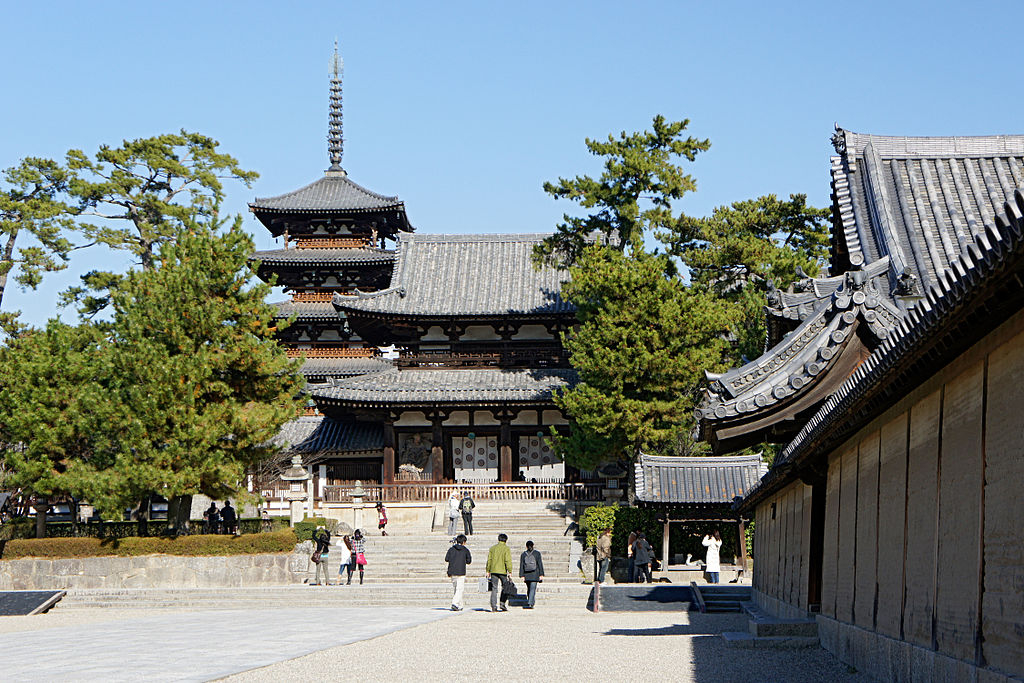Northern Nara Towns¶
Ikoma City¶
The most loudly touted attraction in Ikoma is Skyland Ikoma, an amusement park on top of Mt.Ikoma, with a “jet coaster” from which you can see Nara and Osaka from some unusual angles. A more traditional attraction is the Takayama tea ceremony tea whisk center.
Koriyama City¶
Yamato Koriyama boasts beautiful castle ruins, and is famous for breeding koi (carp) and kin-gyo (goldfish). During the first week in April, when the cherry blossoms around the castle are at their best, Koriyama hosts a spring festival called O-Shiro Matsuri (“Castle Festival”). On the first Sunday of the festival, “samurai” parade through the city’s small merchant streets. Koriyama is located one stop from Nara on JR, and one express stop from Saidaiji on Kintetsu. The area between train stations is full of little shops and department stores.
Other Koriyama attractions¶
Aum Sweet Aum. A JET favorite in Koriyama. Indian food, world-beat music, mellow atmosphere, funky interior. The vegetarian meals plate for ¥1200 is big and highly recommended. Aum Sweet Aum is next to the main gate of Koriyama Castle (look for a small sign and a mosaic tile/mirrored ball on your right hand side). The special ambiance here, blending post-Woodstock with Indo-Japanese, can be a real tonic for whatever’s ailing you.
St. Popée. An odd name, but they serve delicious Italian style (thin crust) pizza. Watch as the smiling chef shapes your pizza and then places it in the wood-burning oven. The set is the best deal. In Koriyama, walk down the main street from Kintetsu station (east), past the green brick road and turn right. The restaurant is on the right-hand side of this street.
Kokudo Yokota, along Route 24 in Koriyama, is a bowling alley/bookstore (some English books) in north; south has 24-hour Chinese restaurant/karaoke/batting range/ used bookstore (some English books)/ video gameroom, for which you’re out’n’about at 3am.
Jiko-in is a beautiful Zen temple and tea house on a hill in the countryside near Ikaruga-cho. The garden’s “borrowed view” of nearby mountains, though now blemished by tall buildings in the distance, is still somehow pleasurable. The lovely garden and temple do provide shelter from the mad pace of the outside world. The ¥800 admission fee includes “matcha” (tea), which is thick and tasty. Accessible by bus or car, but far from train stations.
During the rainy season, the hydrangeas at mountain temple Yata-dera are gorgeous, and Matsuo-dera boasts displays of calligraphy and roses.
Tenri City¶
The first thing you’ll notice in Tenri is that nearly half the residents are wearing matching black happy coats. Why? Tenri is home of Tenri-kyo, a religion claiming Tenri city as the birthplace of all people. The main temple, to which believers make frequent pilgrimages, is located 20 minutes from the JR/Kintetsu station. The temple is open all day and late into the evening, and English pamphlets are available at the information booth. Tenri is also home to a large university that sponsors various international parties, an art museum, and Tenri Stamina Ramen! For ramen, go out of the station, down the street (not the covered mall) towards the temple, and the ramen stand is on your right. It’s open in the evenings.
Tenri is also the beginning of Yamanobe no michi trail to Sakurai (there’s a “Teku-teku” trail map available from Kintetsu Rail), with ancient tombs, temples, and shrines along the way (like Isonokami Shrine of the sacred sword and O-yamato Shrine).
Ikaruga¶
Horyuji, which means “Temple of the Way of Learning,” was founded in 607. One of the most revered temples in Japan, Horyuji has several buildings among the oldest in the world, as well as some of the nation’s finest artifacts and artworks. It was recently named one of the world’s cultural treasures by UNESCO. For the ¥700 admission, you’ll get a detailed map, and a guidebook in English is available. There are also free guided tours in English—look for “Information” sign by bus stop. To get to Horyuji, take the JR Yamatoji Line from JR Nara to Horyuji Station. You can walk for 15 minutes, or take the shuttle bus to the temple. Or, from Kintetsu Nara, take either bus 52 or 60 from the bus terminal on Noborioji behind the station. After the 30 minute ride, the bus stop at Horyuji will be announced in Japanese and English. A path leads past souvenir shops to the temple grounds.
Besides Horyuji, there are several other ancient temples in Ikaruga: Horinji, Hokkiji, Chuguji. Chuguji is part of the Horyuji temple complex, but the other two are a bit of a hike and quite small.
Heguri-cho¶
The temple complex on Shigi-san (Mt. Shigi) is a refreshing break from the tourist temples. As Buddhism is still practiced here, there’s an especially genuine feeling about the place. Once you reach the top of the temple, pay the ¥150 to go underground. In complete darkness, you’ll hear Buddhist chanting and music. Shigi-san can be reached on the Kintetsu Ikoma Line. Get off at Shigisanshita Station (one stop away from Oji) and take the bus up the mountain.
Sango-cho¶
Sango-cho features Tatsuda Shrine (dedicated to the god of wind), and is said to have good festivals.
Ando-cho¶
The Kenkichi Tomimoto Memorial Pottery Museum commemorates a founder of the folk pottery movement, and also has displays by local potters.
Uji¶
Actually, just north of Nara-ken in Kyoto-fu, Uji mustn’t be overlooked. The famed Byodo-in, originally a villa for Fujiwara Michinaga, was converted into a Buddhist temple in 1052 AD. Worthy of note is the main building, Phoenix Hall, a classic example of Heian-period architecture. This hall, by the way, is pictured on Japan’s ¥10 coin. Around town you’ll find many shops selling green tea (o-cha) and green tea-related items. To get to Uji, the easiest way is by JR Nara Line.
